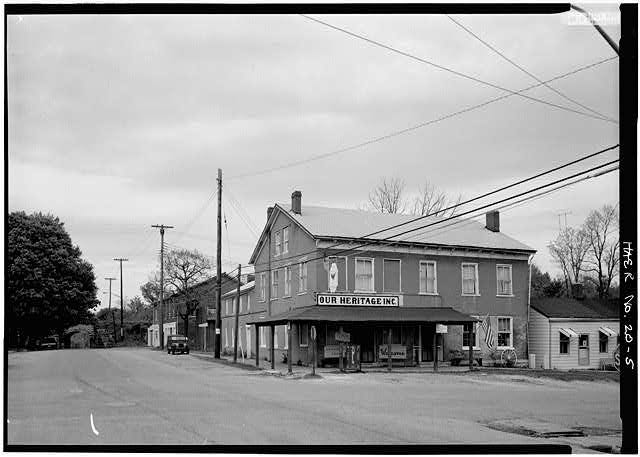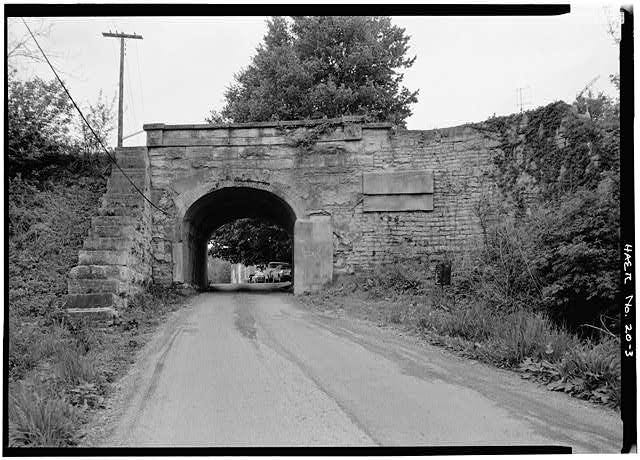The Faded Gem of the Midwest
Following my family to Jennings County, Indiana
Madison & Indianapolis Railroad, Vernon Overpass, Gains Street & Pike Street, Vernon, Jennings County, IN (courtesy of the Library of Congress)
I left near dawn. I drove north on the interstate, crossing the Ohio River into Indiana. My destination was a small church on a country road, the Tea Creek Baptist Church, some four miles east of the Muscatatuck River. It’s country I’d been to before—I’d explored the wildlife refuge there, where in the late fall and early spring, the sandhill cranes gather as they migrate. I’d not known my people were from that country.
The drive overland is for the most part level, the landscape flattened by successive glaciers. Farmland—the corn was ripe, and I passed a big combine harvester working a field. Early on, before the sun climbed, fog hung over the ponds and creeks. When I turned east at Uniontown, the sun leveled its gaze with mine. I dropped the visor and watched for oncoming traffic.
An hour of driving and I found South County Road 300. The church, founded in 1872, was set in an open field beside the road, a large parking lot across the way, with a basketball net in a far corner—the sport of the Hoosiers, of course. The creek lay somewhere in the trees behind the chapel, past the graves and a small playground. I should have known it’d be difficult to find what I was looking for.
I wanted to see the stone of Elizabeth Delilah Monroe, buried here in 1903. She’d died on May 30th of “cardiac dropsy,” basically heart failure. Her death certificate, filed with the Indiana State Board of Health, was what I’d found online to guide me here.
She was widowed and, strangely, her husband’s name was not listed on the certificate. She’d been born December 10, 1846 in Georgia. Her occupation, “house keeper.” She’d died in North Vernon, Jennings County, most likely at home, though I can’t be certain: the paperwork seemed to indicate a house on State Street, though it may as well have been a hospital. Her son, Lewis, was listed as the informant on the document.
That Saturday morning in October, I walked the burial grounds beside the church. There were large families there, of course, but I couldn’t find Elizabeth. There were no Monroes at all. I searched among the older graves, and there were many whose slabs were wiped clean of all words, all names and dates. Any one of them could have been hers. The church was closed, so there was no one to ask. I was far from town. Passing pickup trucks were few and far between.
The grave I’d come looking for was that of my third great-grandmother on my mother’s side. My mother was the last to bear that name, Monroe.
Madison & Indianapolis Railroad, Vernon Overpass, Gains Street & Pike Street, Vernon, Jennings County, IN (courtesy of the Library of Congress)
Elizabeth’s parents were listed on the death certificate—John R. Collins and Eliza Fox—though their own birthplaces were listed as “unknown.” In the Indiana Marriages Index, Elizabeth Collins is listed as having been married to James L. Monroe in 1876 in Jennings, Indiana. His name also appears on the 1939 death certificate of their daughter, Delby, as Lee Monroe, born in Kentucky—hence, James Lee Monroe.
This little church isn’t far from the city of North Vernon, at least by car. It’s about ten miles south of downtown. I headed there to get a sense of where the Monroes might have lived, what they might have seen. In all the fifteen years I’d lived an hour away, I’d not been to that town before.



